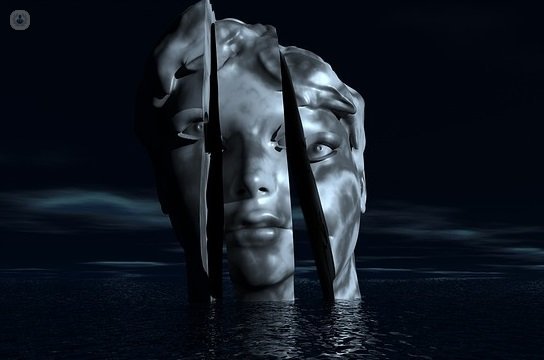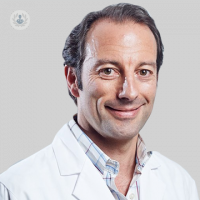Hydrocephalus, a matter of time
Written by:Hydrocephalus is a disorder of the cerebrospinal fluid that can have serious consequences of not being treated in a timely and adequate way. Cerebrospinal fluid (CSF) is found in the interior of the brain, in cavities called the ventricles and surrounding it, in the so-called subarachnoid space.
Cerebrospinal fluid
 Up to now we produce about 500 ml of cerebrospinal fluid in the lateral ventricles, located on both sides of the midline of the brain. From there they pass to a third central ventricle through holes called Monro holes. From this, it passes into the fourth ventricle, located inside the cerebellum through a thin conduit called the Silvio aqueduct, and finally, from this ventricle, it circulates into the subarachnoid space from where it is reabsorbed and returned to the blood.
Up to now we produce about 500 ml of cerebrospinal fluid in the lateral ventricles, located on both sides of the midline of the brain. From there they pass to a third central ventricle through holes called Monro holes. From this, it passes into the fourth ventricle, located inside the cerebellum through a thin conduit called the Silvio aqueduct, and finally, from this ventricle, it circulates into the subarachnoid space from where it is reabsorbed and returned to the blood.
Any process that obstructs the free circulation of this liquid or hinders its reabsorption, causes an increase in the same in the brain called hydrocephalus (obstructive or resorptive respectively). Tumors located in the ventricles or in the vicinity of the narrower passageways cause obstructive hydrocephalus , as well as congenital narrowing of the Silvio aqueduct.
Symptoms of hydrocephalus
In Neurosurgery we understand different symptoms of hydrocephalus that vary according to the age of the patient and whether the CSF increase is fast (acute) or slow (chronic):
- In infants who have not yet closed the bones of the skull, there is an increase in head size as well as tension in the fontanelles. If not corrected, irreversible neurological damage may occur.
- Acute hydrocephalus is a neurosurgical emergency. It usually begins with headache that is increasing progressively, usually accompanied by nausea and vomiting. If it is not corrected it produces a decrease in the level of consciousness that can reach the coma. It can also cause inflammation of the optic nerves (papilloedema or papilledema) leading to blindness.
- Chronic hydrocephalus can occur without a headache and is sometimes difficult to diagnose. In children, they can be manifested by school delays or visual impairment. In the adult it is manifested with a dementia that is associated with instability in walking and incontinence of sphincters, the so-called chronic hydrocephalus of the adult.
Diagnosis and treatment of hydrocephalus
The diagnosis of hydrocephalus is made through imaging, CT or MRI, where an increase in the cerebral ventricles is seen, but in other cases of chronic hydrocephalus, other types of tests such as the measurement of intracranial pressure may be necessary.
Treatment of hydrocephalus is based on correcting excess fluid to maintain adequate pressure inside the skull. When the cause is obstructive, it can be resolved either by eliminating this cause, the tumors, or by communicating the ventricles with the subarachnoid space through endoscopy through a small orifice, endoscopic ventriculostomy. When it is from another source, it is treated by the placement of a bypass, a tube associated with a pressure valve, from the ventricles to the peritoneal cavity or sometimes to the heart.



